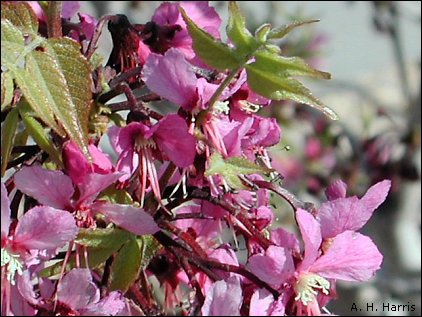
Too impatient to even wait for leaves, the Mexican Buckeye bursts into full bloom in early spring just as the foliage begins to develop. Small rose to purplish-pink flowers cluster together to present a showy display. Seeds lodge in three-lobed pods that are up to 2 inches in diameter. The three large, hard, black, shiny seeds are mildly poisonous, but reputedly made good makeshift marbles for rural West Texans when the need arose. Large, dark green leaves provide an attractive foliage throughout the warm season. In autumn, the leaves turn yellow before falling; seedpods remain as accent points on the bare shrubs throughout the winter, long after the seeds have dropped out.
Most common in limestone situations, the plants often are found where
the roofs of caves have collapsed to form sinks. Extra water and washed-in soil tend to
collect in these depressions, giving extra impetus to the shrub's growth. This
habit of occupying areas below the field of vision frequently means that the unwary
wanderer in our desert is taken totally by surprise.
![]()
Contributor: Arthur H. Harris, Laboratory for Environmental Biology, Centennial Museum, University of Texas at El Paso.
Desert Diary is a joint production of the Centennial Museum and KTEP National Public Radio at the University of Texas at El Paso.

Mexican Buckeye flowers among young leaves, University of Texas at El Paso campus, 29 Mar 2002. Photograph by A. H. Harris.